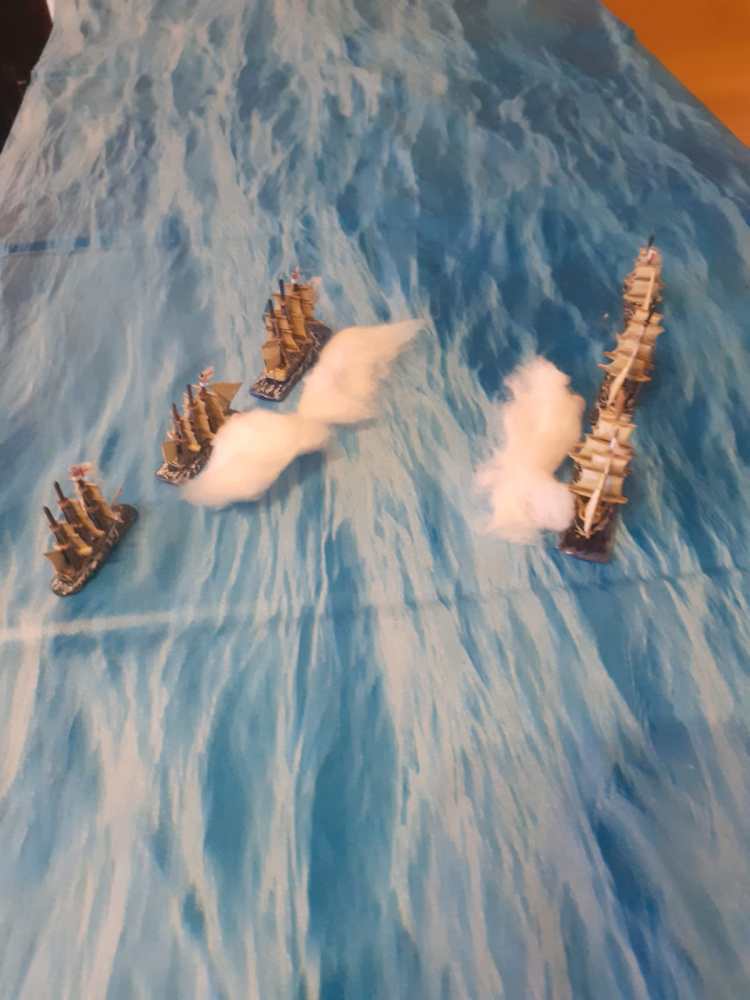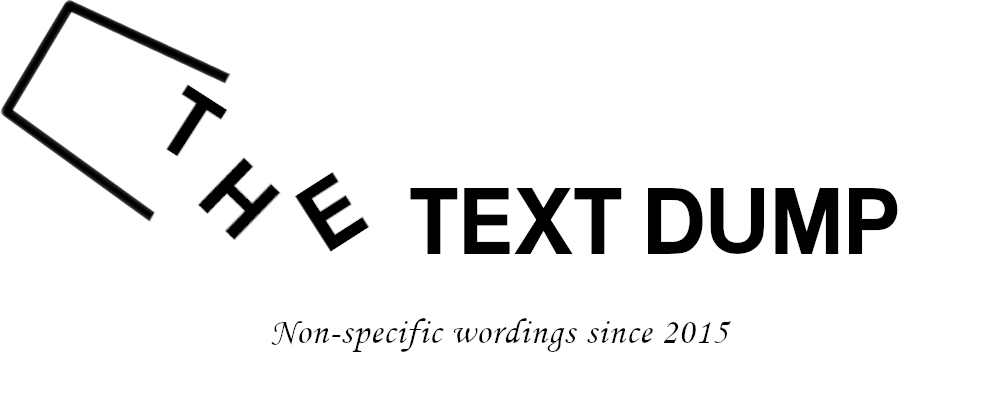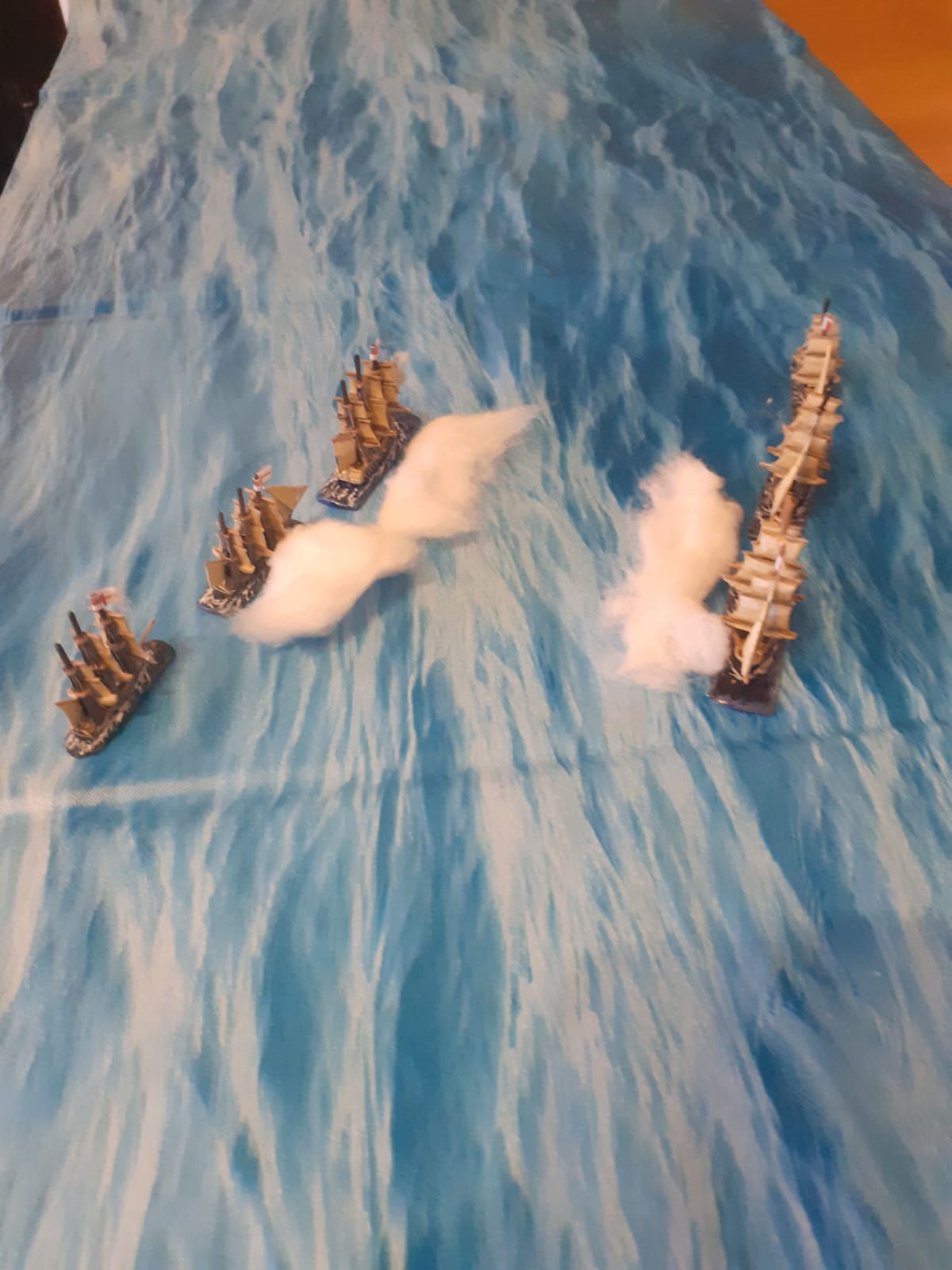Sail the main hoists! Even out those keels! Poop on the deck! Yes, the world of sailing is a baffling and often intimidating one, with a tremendous amount for the lay person to decipher to differentiate what is essentially ‘make the ship go that way’ from ‘this may indicate I’m having a nervous breakdown’. Still though, many wargamers find themselves beckoned by the sea.
And why wouldn’t they be tempted? Naval wargaming befits the frugal and the lazy. At a glance you need no more than one ship per player for some games, and as for owning and making terrain naval games have the most insignificant barrier to entry imaginable.

The barrier, then, is understanding how things work. Coal and diesel-powered ships present less difficulty in this regard – they can pretty much move where they wish- but the world of movement by sail is an alien one to most these days. Sinking the things is similarly confusing if you’re coming from the land warfare method of ‘shoot the gun and the thing falls down/blows up’. It seems to be a bit more intricate than that.
I’ve been intrigued about trying some naval games for a while, particularly after building an old Airfix HMS Victory kit and discovering an addiction to rigging. After a little Twitter-Fu I’d ordered 7 ships from Tumbling Dice of various ratings. I had one ruleset in mind for all this: Kiss Me Hardy. It’s a TooFatLardies game, and I’m generally a very big fan of their work, but more interesting was that it’s described by the author, Nick Skinner, as ‘a naval wargame for people who don’t live naval wargames’ focusing instead on the ‘flavour’ of the period and making things feel right.
KMH isn’t new by any stretch, it’s nearly twenty years old as I write this, but I felt this could be a good topic for review. I’m a total rookie to all things naval games, I don’t know any of the lingo or what different terms mean, so let’s see how easy it is for someone like me to give this a shot. There also aren’t a tremendous amount of reviews to be found for it online – another reason to give my thoughts.

I’ll be scoring the rules using the little wars weightings as I’ve done in the past, as I don’t really think they can be beaten. As part of my learning I’m not going to look up any naval terms whatsoever: this will be an honest assessment as a lay person with no aid from Uncle Google. Now, let’s tack the gunwales and boatswain the anchor, we’ve a game to review!
A QUICK NOTE – My phone’s camera has been less than cooperative recently, so the pictures aren’t exactly dazzling. I’ll do some nice ones with a proper camera in the future, promise.
Presentation
I’ve mentioned already that KMH is close to twenty years old. The TooFatLardies of the early 2000s was not the book and card-printing indy powerhouse it is now, and the style of the rulebook shows in this. The most instant cue here is that the rules are PDF-only, so you’ll need to download, print and bind them yourself if you want a physical copy. The cover art is quite low-resolution and is pixilated when printed in A4, as are a few of the visual items in the book. File size was a far bigger concern in 2003 and I’d rather they save space on the cover art than in the actual rules.
Visual items are few and far between in the actual rules, and the layout is very spartan, which keeps the page count quite low. Really though this isn’t a negative for a print-at-home ruleset, as I know I’m happy that it doesn’t put my printer under any real strain and makes binding more achievable for those so inclined; a 240-page ruleset with only 30 pages of rules isn’t going to make any friends within the print-at-home world. Another advantage to this simple layout is that it makes it far easier to print on coloured paper for those that require it.
That said, there are some things that could do with a boost. A few additional visual examples of some actions would make a big help. There are specific rules using naval terms that weren’t really explained too well, and a visual demonstration here would have made all the difference. Some terms are explained – port and starboard typically have left or right in brackets alongside them – but then other terms don’t that I’d argue are less well known. A glossary of terms would make a huge difference to accessibility here.
Score: 5
Playability
You’ll often hear the idiom ‘the proof of the pudding is in the eating’ – meaning we need to put things to use to see their value. With this review I’d like to propose an amended version: ‘the proof in the pudding is in the eating, and nobody knows what a pudding is’ because for my first game of KMH I’d roped in a similarly-unversed wargaming friend to give it a go. After all, what better way to decipher playability than by trying to teach someone else how to play a game you yourself haven’t yet played.
Accessibility has to be factored into playability, and KMH is no slouch in this regard. A full game can be run with very little investment (rules, both sides, mat and accessories for under £50,) and it’s not hard to expand into bigger games from there. It makes a nice change from the usual need to remortgage when starting a different theatre.
Each ship requires its own stat sheet, A4 in size and looking very similar to a character sheet for an RPG, creating shudders of fear as I pictured tracking 8 ships at once to the same extent you would in D&D. And that’s not to mention the space they’d need. The sheets don’t actually have that much admin linked to them though, and you only really need to refer to them for tracking damage. They’re a little over-engineered as they’re designed to work with every type of ship in the game, and if you made some rating-specific sheets you could comfortably fit two on a side of A4.

The other bit of legwork is the use of cards. Card-based activation requires a degree of planning, particularly as there’s never been a printing run of official KMH cards. I made a master list of what regular playing cards would represent (hearts for British, spades for French, etc) and soon enough we could remember which cards did what without much effort. Since doing this I’ve discovered blank playing cards are a thing, so I’m going to pick up a pack of those to smooth things out.
Obviously the key point of playability is playing the bloody thing, and KMH really impressed me and my similarly-inexperienced friend in how quick we could get into sailing around and firing broadsides. Speed, turning, ranges and firing were all instinctive, as was rules for things like wind changes, and generally I found myself using the rules for confirmation rather than clarity after a few turns. It’s worth pointing out that this was my first ever naval game – the ability to just pick this game up and run with it is phenomenal. The only downside was the lack of a QR sheet, meaning flicking back and forth through the book to find firing tables. I’m sure, as with the ship sheet, I could throw something together myself, and if I do I’ll share both of them here.
Where we did come unstuck, however, was actions that had naval terms. Tacking specifically left both of us at a loss as to what it was, what it represented, and how it worked. Similarly the chart for tacking was just as difficult to understand. After our games the first thing I did on arriving home was to try and find some sailing videos online that better demonstrated what the hell tacking is meant to be – it turns out they’re just as opaque as the term itself. For the sake of anyone else struggling like I did, tacking is basically pivoting on the spot through the dead zone of the wind. It’s a major part of sailing, and ironically understand the dead zone of the wind is the one element that brought us to a complete halt. Raking fire had the same effect, and a lack of examples makes me suspect we likely got both rules totally wrong.
Score: 9
Mechanics
Age of sail games have a reputation for byzantine levels of complexity, and KMH has clearly been written in such a way as to counter this. At a number of points throughout the method certain concepts have been abstracted is explained and it’s hard to disagree with those decisions.
Crew quality is represented by making certain actions and morale tests more or less difficult. They show up as little more than dice modifiers, but for the scope of a game like this that’s more than enough, even if this is quite quite a lean degree of ‘friction’ for a TFL game, lacking the impact of leaders the way their more modern games would. Apparently there are command and control rules in one of the Lardy Specials, but I’m unsure as to which specials they are to be found in. Dice rolls are straightforward, and while there are quite a lot of modifiers these aren’t excessive or difficult to keep track of. The only follow-on rolls you’ll need to do are for special damage when rolling 6s (even then only 2D10 at most,) meaning things run quickly even when a 120-gun first rate fires a raking broadside of 32D6.

Card-based activation is a Lardy hallmark, and it is a great choice here. Sailing boats are in constant motion, making timing vitally important, and not knowing whether you’ll manage to manoeuvre out of harm’s way before the opposing ship can ready its guns is recreated perfectly with the cards. Having separate cards for movement and firing can make KMH a surprisingly tense game at times. The cards can represent squadrons or individual ships, meaning that the game can scale up or down quite well, though a lot of the game’s superb pacing will start to stall if you were to have more than 10 ships per side.
A few different types of dice are used – D12 for wind speed (matched to clock facings) and both D10 and D100 for some instances in combat. These are used pretty sparingly but justify their appearances when they do; they’re well utilised and with the availability of free dice rolling apps they’re no barrier to gameplay.
As with other TFL titles this isn’t a ‘tournament’ game and focus is on scenario and historic play. There is a points-based system for upgrading your ships but the points are assigned relatively randomly, meaning this isn’t a balancing mechanism. Narrative play is very much the focus of KMH and that’s to my liking, though I do recognise it won’t be for others, and really its’ not possible to rejig the rules to make them tournament-suitable. They’re also presented as a ruleset for one-off actions, and while the rules themselves note that there is an ‘upcoming campaign supplement’ as there are for several over TFL games I’m unable to find anything online for this. Perhaps it’s buried away in one of the magazines, bu it’s not initially clear where I’d find it. This is a shame because narrative games such as this scream out for campaign play, and after running two learning games the only thing on my mind was how could I make this into a bigger thing than a single engagement. This, combined with the command and control rules that are out there somewhere, lead me to feel KMH would really benefit from a standalone supplement of all such additions.
Score: 7
Historical Flavour
Being naive to the world of age of sail gaming this may be a difficult topic to evaluate, but at the same time who better to evaluate whether they felt part of the history than someone new to the era? The TFL motto is, after all, ‘play the period, not the rules’.

We see the odd note throughout the book as to how different nations sailed, particularly the superiority of British crews and their tendency to want to get right up close to the enemy to use their carronades and marines, whereas French ships prefer to fight at a distance. The rules gently encourage this by giving different bonuses – British ships get a bonus as short range where French ships get a long range bonus. Playing as the French I instinctively found myself wanting to try to evade and keep my range while my opponent was always looking to close ground and do some real damage. When the British ships did close in my instinct was always ‘how can I get out of this and cover some ground’ which sounds quite accurate to the period.
The wind mechanisms and card-based firing, and just how accessible they were when learning, also played into this. Nothing kills off immersion more than grinding to a halt to look up a rule definition, and KMH’s emphasis on avoiding this adds a lot to historical feeling. My focus when playing was entirely on how best to manoeuvre using the wind to my advantage and hoping the guns would be ready in time. I think some extra detail about command and control would likely have made me ‘feel’ the period more but I certainly felt like an admiral throughout.
Score: 7
Support
This is a funny one, really. The Lardy community is a very active and welcoming one, and it’s not difficult to find folk that will help you with pretty much any title – authors included – but I don’t know if I’d really say KMH is well-supported. Compared to other titles like Chain of Command it’s really a minnow, and the amount of material available is represented in this.
As I’ve mentioned above, there are articles out there in the specials that may expand the base game, but finding them isn’t a speedy process. There is also talk in places of the old Yahoo groups for TFL, something that’s even more patchwork than the specials, and the official forums are a similar story as they more often than not direct you to the Yahoo.
You’ll find in various places online mentions of a KMH2 in the works. I suspect that the reason a lot of these support matters haven’t been resolved would be that they plan to address everything at once with KMH2, but as of now there’s no sign of this game on the horizon.
Score: 5
TOTAL SCORE: 72
KMH is a great game, I can’t think of many wargames I’ve been to dive into and teach others so seamlessly. There’s very little in terms of actual play that a newcomer like me will struggle with, and even less if this isn’t your first boat-centric rodeo. A boateo. Boadeo? Anyway, I’ve had tremendous fun every time I’ve played KMH and it’s something I can see becoming a regular in my stable of games, I’m already planning on picking up a handful of extra boats for bigger and more varied games down the line.
I suppose the main question though is would I recommend KMH to someone new to naval wargaming, and the answer is it depends on how new you are to wargaming as a whole. If you’ve already played a good few different games and you’re looking to give the age of sail a try then this is an absolute must-buy in my opinion, but if you’ve never played any wargames before I’d consider alternatives first. KMH doesn’t do anything wrong, but there’s been some pretty major leaps in making introductory games and packages for newcomers in the wargaming world that a PDF from 2003 can’t compete with. Consider the hurdles of KMH – printing the rules and ship sheets, making your own cards, sourcing appropriate ships, filtering through google/twitter/facebook/yahoo for further information – and compare that to the Black Seas starter sets currently available that throw everything together in one tidy package, and you can see that there’s a level of nous required that’s indicative of a hobby in a very different place now than it was in 2003. That doesn’t detract from KMH’s quality as a game, but it does make you aware of the distance we’ve covered in the last twenty years.


2 thoughts on “Kiss Me Hardy! A Review”